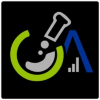 Launch apps instantly. Claim $200 credits on DigitalOcean
Launch apps instantly. Claim $200 credits on DigitalOcean
Azithromycin Prices, Monitor, Analysis & Demand
Written by Chemical Data » Updated on: March 27th, 2024

North America
The North American Azithromycin market encountered challenges during the fourth quarter of 2023, with various factors influencing pricing dynamics. Inflation, interest rates, and geopolitical tensions played pivotal roles in shaping the market conditions. These elements collectively contributed to a bearish sentiment in the market, resulting in a decline in prices when compared to the corresponding quarter of the previous year.
The United States Azithromycin market witnessed notable fluctuations in pricing, with significant changes occurring in October. During this month, Azithromycin prices in the U.S. notably decreased, in line with subdued domestic demand and abundant inventories held by market merchants. The overall growth in new orders was minimal, and the decline in new international sales continued, albeit with a slight deepening. The robustness of the dollar against foreign currencies facilitated more affordable imports, ensuring a plentiful supply in the U.S. domestic market and contributing to a further reduction in Azithromycin prices. However, in November, as signs of inflation easing emerged, consumers exhibited a greater inclination to increase their spending, resulting in an uptick in Azithromycin prices. Nevertheless, in December, prices once again experienced a decline due to diminished demand, with market participants focusing on destocking old inventories.
The price percentage comparison of the first and second half of the quarter showed a decrease of 4%, indicating a downward trend in prices during the latter part of the quarter. Overall, the quarter ending price of Azithromycin Dihydrate (USP, FDA) CFR New York in the USA was USD 122755/MT, representing the latest price of the selected country in the current quarter.
APAC
In the fourth quarter of 2023, the Azithromycin Prices in the APAC region underwent notable changes in prices and market dynamics, influenced by several significant factors. Initially, in October, the prices of Azithromycin experienced a significant slowdown in China. This downturn was attributed to diminishing demand from end-sectors and an abundance of supply in the domestic market. The contraction in China's manufacturing sector during the month, prompted by an eight-day break in early October, indicated weakened domestic demand, leading to a decline in Azithromycin prices. However, market sentiment improved in November, marked by expanded supply and demand, enhanced logistics, increased purchasing quantities, and growing optimism among manufacturers. A rise in new orders from the domestic market, driven by increased inquiries from downstream industries, especially the healthcare sector during the winter season, contributed to an upward trend in Azithromycin prices. Nevertheless, the pricing of Azithromycin in the Chinese market experienced a significant reduction in December. This decline was influenced by a decrease in new order inquiries both domestically and internationally. The dip in domestic demand was linked to the prevalent issue of antibiotic resistance, particularly concerning the excessive use of Azithromycin. This resistance has led to reduced effectiveness, prompting consumers to seek alternative medications and contributing to the overall decline in demand for Azithromycin. The current quarter's price of Azithromycin Dihydrate (USP, FDA) FOB Shanghai in China is USD 120000/MT.
Get Real Time Prices Of Azithromycin:- https://www.chemanalyst.com/Pricing-data/azithromycin-1374
Europe
In the last quarter of 2023, Azithromycin pricing in the European region was subject to various influencing factors. To begin with, Germany witnessed a decrease in Azithromycin prices in October, attributed to a combination of factors including subdued consumer sentiments, elevated interest rates, and abundant market supply. The sharp decline in European consumer inflation during October, driven by lower fuel prices and swift interest rate hikes that curtailed business expenses and market demand, played a significant role in the reduction of Azithromycin prices. Moving into November, Azithromycin prices showed improvement due to a moderate increase in demand from the pharmaceutical and healthcare sectors, heightened consumer spending, and a reduction in market inventories. Additionally, the decrease in China's exports to the European Union in November contributed to reduced inventories in the German market, further supporting the upward trajectory of Azithromycin prices. However, come December, Azithromycin prices experienced another decline, primarily influenced by reduced demand from both the pharmaceutical and healthcare sectors. The resurgence of inflation, coupled with sustained elevated interest rates, prompted companies and consumers alike to scale back on investments and spending. This collective reduction in demand for Azithromycin in the German market led to a decline in prices during December. The quarter ending price for Azithromycin Dihydrate (USP, FDA) CFR Hamburg in Germany was USD 122200/MT.
About Us:-
ChemAnalyst is an online platform offering a comprehensive range of market analysis and pricing services, as well as up-to-date news and deals from the chemical and petrochemical industry, globally.
Being awarded ‘The Product Innovator of the Year, 2023’, ChemAnalyst is an indispensable tool for navigating the risks of today's ever-changing chemicals market.
The platform helps companies strategize and formulate their chemical procurement by tracking real time prices of more than 400 chemicals in more than 25 countries.
ChemAnalyst also provides market analysis for more than 1000 chemical commodities covering multifaceted parameters including Production, Demand, Supply, Plant Operating Rate, Imports, Exports, and much more. The users will not only be able to analyse historical data but will also get to inspect detailed forecasts for upto 10 years. With access to local field teams, the company provides high-quality, reliable market analysis data for more than 40 countries.
Copyright © 2024 IndiBlogHub.com Hosted on Digital Ocean









Post a Comment
To leave a comment, please Login or Register